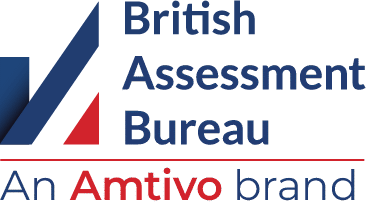The construction industry is full of potential risks and hazards, from operating heavy machinery to working on building sites. These dangers not only jeopardise the safety of employees but also pose significant risks to construction companies.
According to the HSE, there were 60,645 injuries to employees reported under RIDDOR (Reporting of Injuries, Diseases and Dangerous Occurrences Regulations) in 2022/23, and 35.2 million working days were lost due to work-related illness and workplace injury.
Construction companies that face multiple health and safety incidents could suffer high employee turnover, a poor industry reputation, low employee morale, delayed projects and potential legal and costly financial consequences.
This is why having a robust Occupational Health and Safety (OH&S) Management System under ISO 45001 could be a worthy investment.
Health and Safety Issues in the Construction Industry
The construction industry is one of the most hazardous sectors for employees, with a variety of potential risks presenting significant health and safety challenges.
Some of the most common hazards include:
- Falls from height: Working at height is commonplace in construction, making falls a significant risk. These could be falls from scaffolding, ladders or roofing. Workers could sustain serious or fatal injuries by falling from height.
- Machinery accidents: Construction sites often use heavy machinery, which can result in serious harm to individuals if not operated or maintained properly. Machinery-related accidents can trigger crushing injuries, entrap workers or cause strikes by moving objects.
- Exposure to hazardous substances: Construction workers often encounter hazardous substances such as dust, asbestos or toxic chemicals. Without appropriate precautions, this could lead to health issues such as respiratory problems, skin irritation or more serious long-term health conditions.
- Strikes by falling objects: Falling objects, whether small tools dropped from a height or materials being moved around, can potentially injure workers.
- Manual handling and musculoskeletal disorders: Lifting, carrying, pushing or pulling heavy objects incorrectly can lead to musculoskeletal injuries. Cumulative strain from tasks can cause both immediate and long-term health problems.
These hazards not only pose a threat to worker safety, but also have broader implications for construction projects. Accidents and health issues can lead to project delays due to the absence of injured workers, potential legal issues and damage to the reputation of the businesses.
This is why prioritising health and safety is not just a legal duty – it also makes good business sense.
Read our guide to a manager’s guide to safe work practices.
Challenges of Health and Safety on Building Sites
Challenge 1 – Diverse and dynamic work environments
Construction sites are often hubs of activity, with potential hazards and risks around every corner.
Multiple tasks are carried out simultaneously at various parts of the site. For example, one area may be dedicated to groundwork while another is being used for assembling scaffolding.
Weather conditions also pose challenges to external sites – rain, wind or freezing temperatures could all increase the risk of accidents occurring. These variables mean construction sites require flexible, comprehensive safety plans that can adapt to evolving circumstances.
Challenge 2 – Multiple contractors and workers
Construction projects often involve multiple contractors, subcontractors and workers. This means there is a need for coordination and communication among different teams, so it is essential to ensure everyone understands their roles and responsibilities regarding health and safety.
All on-site workers need the appropriate training relevant to their tasks and should be aware of the potential hazards in their area of work. Additionally, everyone needs to know the emergency procedures in case of an incident.
Challenge 3 – Compliance with regulations
Compliance with health and safety regulations is crucial for construction firms in the UK.
There are many key regulations that must be complied with. Some examples of these include:
- Health and Safety at Work Act 1974: This outlines the general duties of employers to ensure the health and safety of their employees.
- Construction (Design and Management) Regulations 2015: This specifies the management of health and safety specifically in construction projects, including roles, duties and responsibilities.
- Work at Height Regulations 2005: This requires the proper planning, supervision and execution when working at height.
- Manual Handling Operations Regulations 1992: This requires employers to reduce the risk of injuries from manual handling as much as possible.
Adhering to these regulations is not just a legal necessity, it also helps maintain a safe and productive work environment.
Managing Health and Safety in Construction
Just like a construction site itself, there are a number of moving parts involved with managing on-site health and safety:
- Managing risks: Applying logical prevention principles to identify, assess and control hazards.
- Appointing the right people: Appointing competent, responsible individuals as health and safety leads.
- Providing information and training: Ensuring everyone on site understands the associated risks and safety protocols when on site.
- Cooperation, communication and coordination: Encouraging effective teamwork and communication among all team members to prevent accidents.
- Worker consultation and engagement: Involving workers in discussions to develop practical, effective health and safety policies.
These issues can all be managed within a health and safety management system, a framework designed to systematically manage and improve an organisation’s health and safety performance.
Why Is ISO 45001 Important for the Construction Industry?
ISO 45001 is an international standard for Occupational Health and Safety (OH&S) Management Systems. The standard is particularly applicable to the construction sector because it provides a comprehensive framework for managing numerous and significant health and safety risks.
This international standard sets the criteria for an Occupational Health and Safety Management System (OH&S Management System), providing a robust framework to establish, implement, maintain and improve OH&S. It adopts a proactive approach, focusing on preventing accidents and incidents rather than reacting to them.
A key feature of ISO 45001 is its emphasis on risk-based thinking. It encourages construction companies to identify potential hazards, assess risks and take action to eliminate or mitigate them ahead of time. This could create a safer working environment by decreasing the potential for work-related illnesses and injuries.
ISO 45001 also stresses the importance of leadership and worker participation. It mandates top management’s role in the OH&S Management System, actively creating a safety culture within the companies. Workers themselves are also encouraged to actively participate in identifying hazards and suggesting safety improvements.
Achieving ISO 45001 certification could also enhance a construction company’s reputation by demonstrating its commitment to health and safety. This can potentially increase opportunities for new business and reduce costs associated with accidents and illnesses.
Read our guide to the benefits of Occupational Health & Safety Management Systems.
What Are the Key Benefits of ISO 45001 for the Construction Industry?
Construction companies who become ISO 45001 certified can benefit from the following:
- Legal compliance: The standard can help construction firms to demonstrate compliance with current health and safety regulations. Being compliant with regulations reduces the risk of penalties and potential legal action.
- Reduced downtime: By prioritising early risk detection and prevention, ISO 45001 can help reduce the downtime associated with accidents and health issues. This could result in improved productivity and more efficient project timelines.
- Improved employee morale: Implementing ISO 45001 sends a strong message to employees that their safety is a priority. This can boost morale, increase job satisfaction and result in higher employee retention.
- Enhanced reputation: Achieving ISO 45001 certification signals to clients, partners and regulatory bodies that the company is committed to health and safety. This can enhance the company’s reputation, win client trust and provide a competitive edge in the marketplace.
- Financial savings: By reducing workplace incidents, firms can avoid costs associated with accidents, such as medical expenses, compensation and equipment replacement.
What Are the Main Requirements of an ISO 45001-Certified Occupational Health and Safety Management System?
In order for an OH&S Management System to be effective under ISO 45001, it must meet several requirements.
- The leadership team’s commitment to promoting a safety culture is crucial for implementing an OH&S management system. A dedicated health and safety committee, led by senior management, could ensure that health and safety are prioritised.
- Complying with health and safety regulations is essential for achieving ISO 45001 certification. Organisations must stay updated on regulatory changes and ensure they maintain compliance with relevant regulations to avoid legal consequences.
- Running risk assessments to identify hazards is an important way to help keep your organisation and its employees safe. Risk assessments should be carried out routinely to manage these hazards and implement preventive measures, particularly after changes have been made, such as installing new equipment.
- Organisations must also establish emergency response plans in the case of an incident. These plans should cover potential emergency scenarios, including clear procedures for evacuation, medical aid and communication.
- Any accidents or near-misses should be thoroughly investigated to identify what caused them, learn from these incidents, and implement safeguards to prevent further risk.
- Adequate and ongoing training is crucial to equip employees with the necessary knowledge and skills to perform their jobs safely. Training requirements may need to be regularly reviewed and updated.
ISO 45001 emphasises the importance of ongoing monitoring and continual improvement. Regular audits and management reviews would need to be conducted to assess the performance of the OH&S Management System and identify areas for improvement.
Download our free ISO 45001 checklist.
How Your Organisation Can Become ISO 45001-Certified
In order to achieve ISO 45001 certification, organisations should follow a series of steps:
- Gap analysis: Conduct an initial gap analysis to identify what needs to be done to meet ISO 45001 requirements.
- Implement the system: Create and implement an operational health and safety management system, including policies, procedures, and controls based on ISO 45001 criteria.
- Training and awareness: Ensure that employees understand the OH&S management system and their roles within it.
- Internal audit: Conduct internal audits to verify compliance and identify any areas for improvement.
- Management review: Top management should review the system and make necessary adjustments.
- Certification audit: A third-party certification body conducts an external audit. If successful, they will issue an ISO 45001 certificate.
Regular surveillance audits (typically annually) are then required to maintain certification.
How British Assessment Bureau Can Help
Implementing an Occupational Health and Safety Management System in construction can be a lengthy process – although many organisations are surprised by how much they already have in place.
Engaging the help of ISO experts can help make the implementation process smoother and more efficient.
British Assessment Bureau is a UKAS-accredited certification body for ISO certifications. We can help guide your business towards successful ISO certifications, providing an award-winning service built on confidence and trust.
Get started on your journey to ISO 45001 certification today – get a quote or contact our team to discuss your needs.


